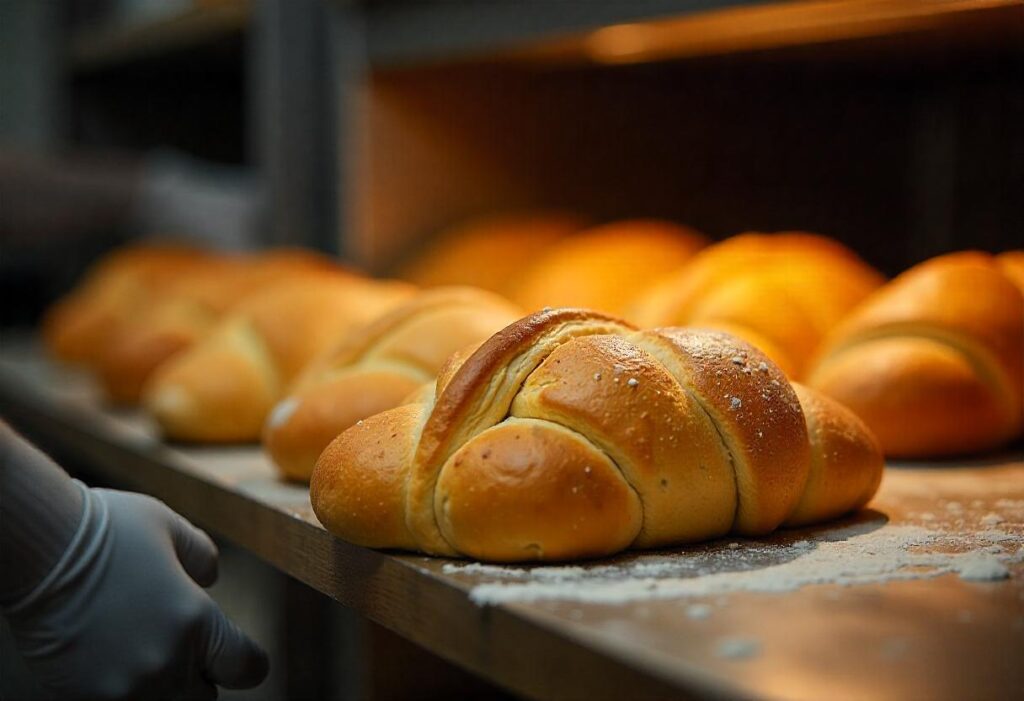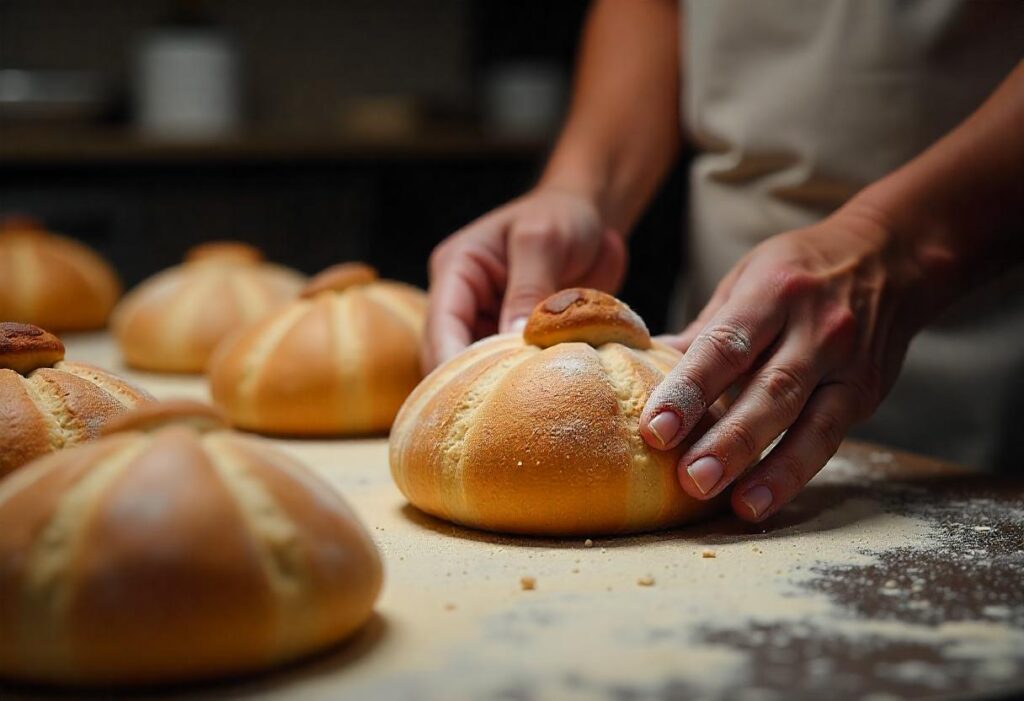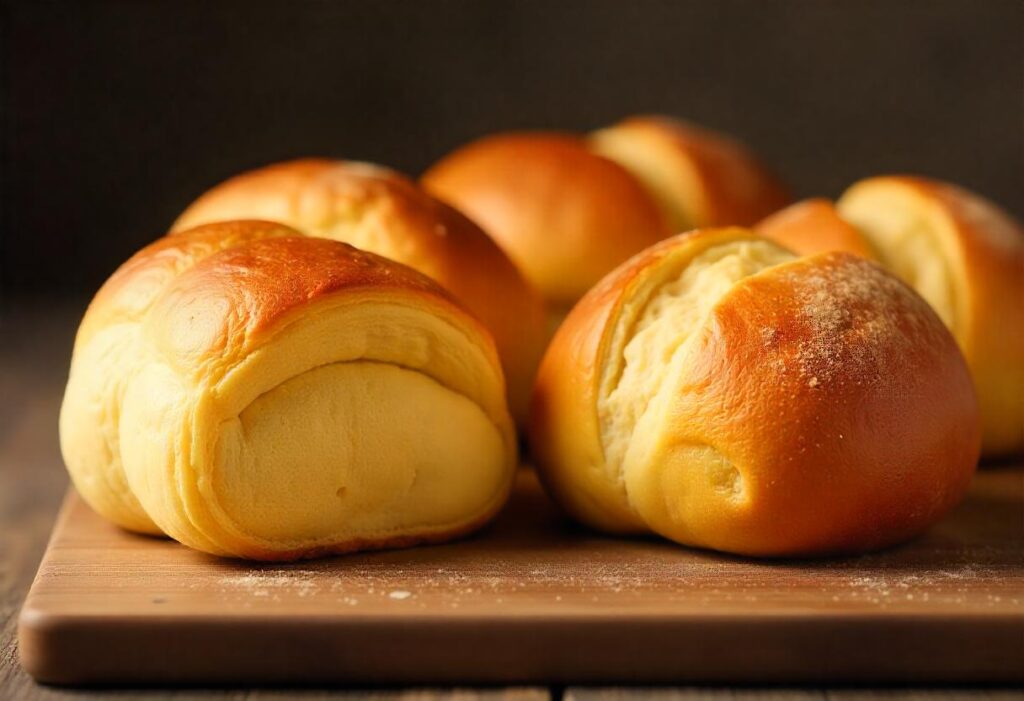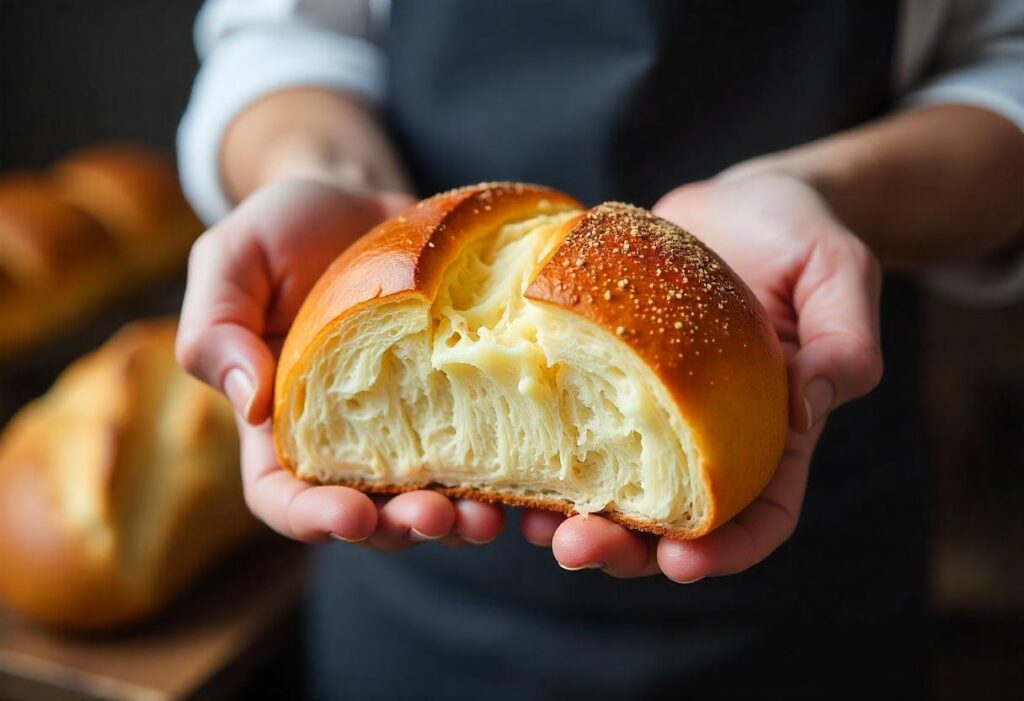What is the difference between brioche and bread rolls? Have you ever stood in a bakery, staring at the beautiful display of breads, wondering what makes each type special? Understanding what is the difference between brioche and bread rolls can help you choose the perfect bread for your meal or occasion.
🥖 Related: If you’re wondering how brioche compares to other soft breads, check out Is Milk Bread Like Brioche?.
The difference between brioche and bread rolls might seem small at first glance, but these two baked goods are worlds apart in many ways. From their ingredients to their uses, understanding these differences can help you choose the perfect bread for your next meal or special occasion.
Introduction: Understanding Brioche and Bread Rolls
What is the difference between brioche and bread rolls begins with their fundamental composition. Brioche, a luxurious French bread, stands in stark contrast to the humble bread roll, each bringing unique characteristics to the table.
When you look at brioche, you’ll notice its golden-brown, shiny exterior and soft, yellow interior. Bread rolls, on the other hand, typically have a more neutral appearance with a white or tan color inside. These visual differences hint at the fundamental variations in ingredients, preparation, and uses.
« Bread is the king of the table and all else is merely the court that surrounds the king. » – Louis Bromfield
As we explore what makes these breads different, you’ll discover why brioche might be perfect for your weekend brunch, while bread rolls could be the ideal choice for your lunchbox sandwich. Let’s dive into their fascinating histories first! 🍞✨
The Origins and Heritage of Brioche
The French Connection: Brioche’s Cultural Significance
Brioche has a rich history deeply rooted in French culture. Dating back to the 15th century, this luxurious bread became popular among the French aristocracy…
🇫🇷 Explore: Learn more about how brioche is traditionally enjoyed in France in How is Brioche Eaten in France?.
In fact, brioche is so ingrained in French history that it’s often associated with Marie Antoinette’s famous (though misattributed) phrase « Let them eat cake » – which was actually a reference to brioche, not cake as we know it today!
The name « brioche » comes from the Old French word « broyer, » which means « to knead. » This reflects the intensive kneading process required to develop the perfect brioche texture. Over the centuries, brioche has evolved from a luxury only the wealthy could afford to a beloved staple in bakeries around the world.
In France, brioche isn’t just bread; it’s a cultural symbol that represents craftsmanship and indulgence. Traditional celebrations and holidays often feature special brioche variations, making it a bread that brings people together during meaningful times. 🥐🇫🇷

Traditional Ingredients That Define Authentic Brioche
What truly sets brioche apart is its rich ingredient list. Unlike regular bread, brioche contains a high proportion of butter and eggs, giving it that distinctive yellow color and rich flavor. Let’s look at what goes into a traditional brioche:
| Ingredient | Quantity | Purpose |
|---|---|---|
| Bread flour | 3½ cups | Provides structure |
| Butter | ½ to 1 cup | Adds richness and flavor |
| Eggs | 4-6 | Creates color and richness |
| Sugar | ¼ cup | Adds sweetness |
| Milk | ¼ cup | Enhances texture |
| Yeast | 2¼ tsp | Leavening agent |
| Salt | 1½ tsp | Enhances flavor |
The high butter content (sometimes up to 50% of the flour weight!) is what gives brioche its melt-in-your-mouth quality. The eggs contribute to the bread’s golden color and add protein, which helps create that soft, tender crumb structure.
When you bite into a piece of brioche, you’re experiencing centuries of French baking tradition in which butter and eggs transform simple flour into something truly extraordinary. The result is a bread that’s rich, slightly sweet, and perfect for both sweet and savory applications.
Bread Rolls: A Global Staple with Endless Variations
The History and Evolution of Bread Rolls
Unlike the aristocratic origins of brioche, bread rolls have more humble beginnings. These versatile little breads can be traced back to ancient civilizations…
🍞 Fun Fact: Did you know there’s also a difference between Brioche Buns vs Regular Buns?
Where people discovered that small portions of dough bake more quickly and evenly than large loaves.
Bread rolls have evolved differently across cultures, resulting in countless variations around the world. In Germany, they’re known as « brötchen, » in Mexico as « bolillos, » and in India as « pav. » Each culture has adapted rolls to suit local tastes, ingredients, and culinary traditions.
What makes bread rolls so special is their incredible adaptability. They’ve survived through centuries and across continents because they’re practical, versatile, and satisfy a basic human need for portable, portion-controlled bread. Whether enjoyed with soup in Russia or filled with meat in Vietnam, bread rolls connect diverse food cultures worldwide. 🌍🥖

Basic Ingredients and Preparation Methods
Bread rolls are beautifully simple compared to their rich cousin brioche. A basic bread roll recipe contains just a few ingredients:
| Ingredient | Quantity | Purpose |
|---|---|---|
| Bread flour | 3½ cups | Provides structure |
| Water | 1¼ cups | Creates dough |
| Yeast | 2¼ tsp | Leavening agent |
| Salt | 1½ tsp | Enhances flavor |
| Sugar | 1 tbsp | Feeds yeast |
| Oil | 2 tbsp | Adds tenderness |
Notice the absence of eggs and the minimal fat content compared to brioche. This simpler ingredient list creates a bread that’s more neutral in flavor, making rolls incredibly versatile for different meals and fillings.
The preparation method for rolls is also typically simpler than brioche. While brioche requires multiple rises and careful handling of its enriched dough, bread rolls are more forgiving. They can be shaped in various ways – round, oval, knot-shaped, or even in a pull-apart configuration – allowing for creativity while maintaining their essential « bread roll » character.
What is the Difference Between Brioche and Bread Rolls: Ingredients Breakdown
The Role of Butter and Eggs in Brioche
The most significant difference between brioche and bread rolls lies in their fat content. Brioche is classified as an « enriched dough » because it contains a high percentage of butter and eggs…
🧈 Try This: Want to make brioche at home? Follow this Milk Brioche Rolls – Homemade Recipe.
These ingredients do much more than just add flavor – they completely transform the bread’s structure, texture, and shelf life.
Butter in brioche creates that melt-in-your-mouth sensation and adds a rich flavor that simple bread rolls can’t match. When you tear apart a brioche, you might even see the layers created by butter, similar to what you’d find in croissants (though less pronounced).
Eggs in brioche serve multiple purposes:
- They add richness and flavor
- They contribute to the golden yellow color
- They provide protein that helps with structure
- They add moisture that keeps the bread soft
« Brioche is not just bread with butter and eggs – it’s a transformation of ordinary ingredients into something extraordinary through meticulous technique and tradition. »
This enrichment comes at a cost, though – brioche is more challenging to make because the high fat content can interfere with gluten development and yeast activity. That’s why brioche requires careful handling and often longer rising times than simple bread rolls. 🧈🥚
Simplicity of Bread Roll Ingredients
Bread rolls, by contrast, embrace simplicity. Their straightforward ingredient list makes them:
- Easier to prepare
- More economical
- More neutral in flavor
- More versatile for different uses
- Potentially healthier (lower in calories and fat)
The absence of large amounts of butter and eggs means bread rolls rely more on proper technique to achieve a good texture. The gluten network develops more readily in bread roll dough, creating a chewier, more « bread-like » consistency compared to the tender, cake-like texture of brioche.
Another interesting difference is that bread rolls can easily be made vegan (without any animal products), while traditional brioche, with its reliance on butter and eggs, cannot. This makes bread rolls more adaptable to different dietary needs and preferences.
Texture and Taste: How Brioche and Bread Rolls Compare
The Rich, Buttery Experience of Brioche
When you bite into brioche, the first thing you’ll notice is how it seems to dissolve in your mouth. The texture is soft, pillowy, and tender – almost like a cross between bread and cake. This unique mouthfeel comes from the high fat content and the way the dough is prepared.
Flavor-wise, brioche has:
- A buttery richness that coats your palate
- A subtle sweetness (even without added fillings)
- A complex taste that stands on its own
- A slightly eggy flavor similar to challah bread
Brioche has a pull-apart texture created by the layers of butter throughout the dough. When you tear a piece, you’ll see thin strands connecting the pieces – evidence of its strong but tender gluten structure modified by all that butter.
The crust of brioche is thin and golden brown, often with a beautiful shine from an egg wash applied before baking. This creates visual appeal while adding yet another layer of richness to the eating experience. 😋


The Versatile, Neutral Profile of Bread Rolls
Bread rolls have a completely Brioche’s rich, tender crumb contrasts with the more open structure of traditional bread rolls texture and taste profile. Where brioche is all about indulgence, bread rolls focus on versatility and substance. A good bread roll has:
- A slightly chewy texture
- A neutral flavor that complements fillings
- A satisfying density that fills you up
- A more substantial crust (particularly in artisan varieties)
The beauty of bread rolls is how they can adapt to whatever you pair them with. Their relatively bland flavor profile creates a perfect canvas for everything from sweet jam to savory meats, allowing the fillings to take center stage.
When examining what is the difference between brioche and bread rolls, texture is a key factor. Texture-wise, bread rolls have a more open crumb structure with visible air pockets, unlike the tight, uniform crumb of brioche. This makes them better at soaking up sauces and juices – think of a dinner roll sopping up gravy or a hamburger bun capturing all the juices from your burger patty.
The contrast between these two breads isn’t a matter of one being better than the other – it’s about different breads serving different purposes. Just as you wouldn’t use a hammer to tighten a screw, you might not want to use brioche for every bread application, nor bread rolls for others. 🔨🪛
Conclusion
This concludes the first part of our exploration of what is the difference between brioche and bread rolls. In the next section, we’ll continue examining what is the difference between brioche and bread rolls by looking at nutritional profiles, culinary uses, and troubleshooting tips. In the next part, we’ll dive into nutritional comparisons, ideal uses for each bread type, common problems and solutions when making them, and much more! Let me know when you’d like me to continue with the next section.

